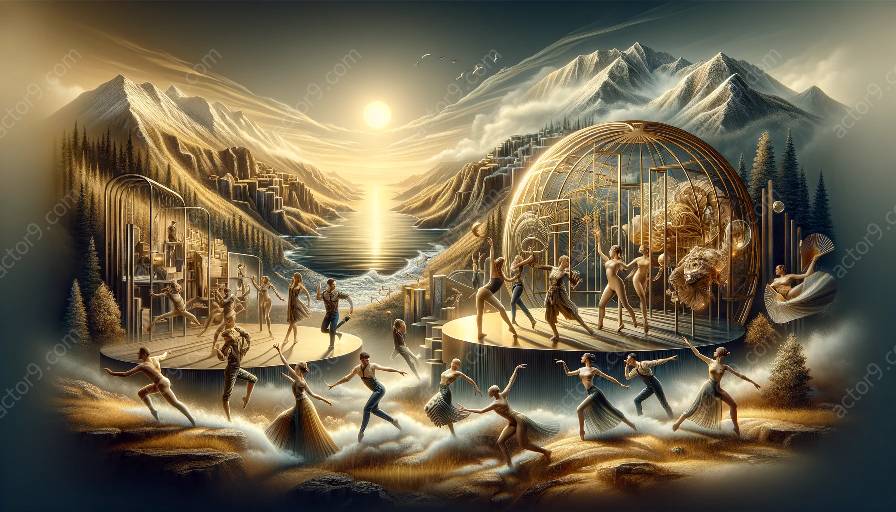Physical storytelling is an immersive and dynamic art form that involves the use of the body, movement, and expression to convey narratives and evoke emotions. In the realm of physical theatre, the key elements of physical storytelling play a vital role in creating compelling and impactful performances.
Key Elements of Physical Storytelling:
- Body Language: The use of expressive body language is essential in physical storytelling. Actors utilize their movements, gestures, and postures to communicate emotions, thoughts, and intentions, creating a powerful visual narrative.
- Physicality: Physical storytelling embraces the physicality of performance, emphasizing the use of the entire body as a storytelling tool. This includes the manipulation of space, levels, and dynamics to create visually engaging and evocative storytelling.
- Rhythm and Timing: Rhythm and timing play a crucial role in physical storytelling, allowing performers to enhance the dramatic impact of their movements and actions. The deliberate use of rhythm and timing can add depth and nuance to the narrative, influencing audience engagement and perception.
- Use of Props and Objects: Incorporating props and objects into physical storytelling can add layers of meaning and symbolism to the performance. From simple everyday objects to elaborate props, the strategic use of these elements can enrich the storytelling experience, creating visual metaphors and enhancing the overall narrative.
When exploring the techniques in physical theatre, these key elements form the foundation of compelling and expressive performances. Physical theatre techniques often leverage these elements to create immersive and visually stunning storytelling experiences.
Techniques in Physical Theatre:
Physical theatre encompasses a diverse range of techniques that harness the power of the body and movement to convey narratives. Some of the key techniques in physical theatre include:
- Movement and Choreography: Movement and choreography form the core of physical theatre techniques, allowing performers to express emotions, tell stories, and explore themes through orchestrated physical movements and sequences.
- Mask Work: The use of masks in physical theatre provides performers with a powerful tool for embodying characters, archetypes, and fantastical beings. Mask work is an integral part of physical storytelling, enabling actors to adopt and express different personas through physicality and expression.
- Physical Improvisation: Physical improvisation encourages performers to explore spontaneous and unscripted movement, allowing for the discovery of new narratives and expressions through the body. It provides a platform for creativity and collaboration, fostering dynamic and authentic storytelling experiences.
- Physical Ensemble Work: Physical theatre often involves collaborative ensemble work, where performers engage in synchronized physical interactions, group movement, and collective storytelling. This collective effort showcases the power of coordinated physical expression in conveying complex narratives and themes.
By mastering these techniques, performers can effectively integrate the key elements of physical storytelling into their artistic practice, creating impactful and emotionally resonant performances.
Embracing Physical Theatre:
As an art form that celebrates the captivating potential of the human body, physical theatre offers a unique platform for storytellers to engage audiences on a visceral and emotional level. The key elements of physical storytelling directly intersect with the techniques in physical theatre, shaping the way narratives are conveyed and experienced.
From the evocative use of body language to the exploration of physical space and dynamics, physical theatre transcends linguistic barriers and relies on the universal language of the body to communicate narratives. By embracing physical theatre and its key elements, performers can tap into a rich and immersive storytelling medium that captivates and resonates with diverse audiences.
Ultimately, the fusion of the key elements of physical storytelling with the techniques in physical theatre opens up boundless possibilities for creating captivating and transformative performance experiences, where each movement, gesture, and expression becomes a vital part of the storytelling tapestry.




































